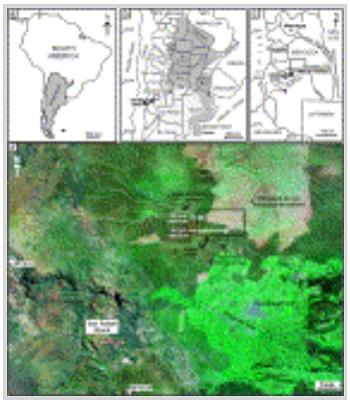Alfonsina Tripaldi, Marcelo A. Zárate, George A. Brook, G.Q. Li.
2 011
Quaternary Research 76(2), 253–263, doi:10.1016/j.yqres.2011.06.008
The Andean piedmont of Mendoza is a semiarid region covered by extensive and partially vegetated dune fields consisting of mostly inactive aeolian landforms of diverse size and morphology. This paper is focused on the San Rafael plain (SRP) environment, situated in the distal Andean piedmont of Mendoza (34° 30′S), and reports the sedimentology and OSL chronology of two representative exposures of late Quaternary deposits, including their paleoenvironmental and paleoclimatic significance. Eleven facies, including channel, floodplain, fluvio–aeolian interaction, and reworked pyroclastic and aeolian deposits, were described and grouped into two facies associations (FA1 and FA2). FA1 was formed by unconfined sheet flows, minor channelized streams and fluvial–aeolian interaction processes. FA2 was interpreted as aeolian dune and sandsheet deposits. OSL chronology from the SRP sedimentary record indicates that between ca. 58–39 ka and ca. 36–24 ka (MIS 3), aggradation was governed by ephemeral fluvial processes (FA1) under generally semiarid conditions. During MIS 2, the last glacial maximum (ca. 24–12 ka), a major climatic shift to more arid conditions is documented by significant aeolian activity (FA2) that became the dominant sedimentation process north of the Diamante–Atuel fluvial system. The inferred paleoenvironmental conditions from the SRP sections are in broad agreement with regional evidence.

